There is hardly a person who had never heard of such a pathology, such as nail fungus. Someone familiar with the diagnosis of ad drugs, and someone found out about the disease firsthand, when a dermatologist's office or to diagnose it yourself.
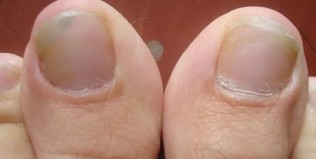
Definition
Medical term onychomycosis (lat. onychomycosis) is Latin and means nail fungus, and means infectious diseases of a fungal nature. This is the most common in the world, the loss of the nail plate and adjacent soft tissue: statistics according to the world health organization (who), athlete's foot affects about 27% of people, and this figure is almost double the number of fungal infections of the nails of the fingers.
A variety of fungal infections of the nails
Nail fungus is usually classified as the appearance of the affected areas. Symptom classification perform what looks like fungus on the nails, it differentials into three types, depending on the clinical symptoms:
- atrophic, or onycholitic, where the nail plate is affected significantly to the point of rejection of the nail bed;
- hypertrophic form, who have lost their natural luster the nail changes its color (white or, on the contrary, in the dark) and structure (material thickens) with the advent of a variety of form changes and even breaks at the edges;
- normotroficheskie – species characterized by the smallest degree of injury, where the nail plate is not thickened, while the rest shiny and smooth, but still externally changed the appearance of spots, streaks and other visible changes to its natural transparency and colour.
There is another classification, which, according to nail fungus is divided into types depending on the lesion:
- in total, in which the pathogenic process covers the whole of the nail plate;
- distal in the form of damage to only the free edge of the nail working a finger pad;
- proximal, which destroys the plate edge, whereby the nail shaft (opposite the free edge of the nail!);
- the lateral shape of the lesions that affect the lateral side of the nail plate.
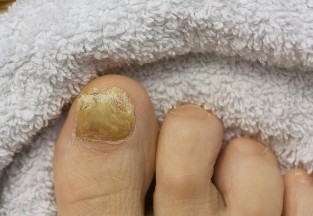
It seems that the pathology of the
The most common among the population of fungal nail diseases is the resemblance to other skin diseases treatment of fungal nature. Depending on the stage of the disease, the nails begin to look unhealthy because lose the natural Shine and transparency.
Smooth and steady, they become thick and deformed, and covered with various colors (usually white or dirty yellow) tone. Soft tissue destruction the parasites in the keratin layer is also involved in inflammatory reactions, swelling.
If you look at pictures of the destruction of the nail plate from the perspective of the dynamics of the disease, it can be divided into three consecutive steps:
- The very first stage, almost not visible, except for light tarnish, spots, or streaks on the disc.
- The so-called hard phase, fast-paced at the beginning, all the symptoms of onychomycosis is manifested.
- Far – it's the ultimate degeneration of the nail, can be supplemented by the smell of the decaying tissue.
Symptoms of fungal nails
Symptoms of athlete's foot corresponds to the chronology of the development of the pathogenic process, the speed of which depends on the specific type of pathogen and the individual characteristics of the health status of the sick.
So, how to determine the nail fungus before you visit a dermatologist office? Look closely at the characteristic symptoms that accompany the fungal infection, the nail plates of the fingers:
- First of all, the nail plate loses shiny gloss, becoming dull and rough.
- Then transparent and pink, the nail will change color, become pale, gray or dirty yellow.
- The plate thickness increases.
- The surface of the body defects appear in the form of stripes, waves, bumps, bends, etc.
- The nail becomes brittle, it begins to exfoliate and crumble.
- Fingers since the rise of the anti-inflammatory begins to emit an unpleasant odor.
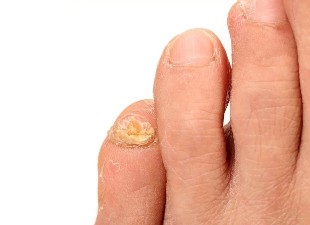
In the end, completely destroyed the exposed nail shedding, i.e. flaking, revealing the pringtime bed.
The causes of onychomycosis
The disease is one of the manifestations of mycosis, which is a loss in this case, the nail plate micro-organisms-dermatophytes one (or more!) three genera:
- Microsporum (species canis);
- Trichophyton (rubrum species – 90% of all fungal infections, mentagrophytes, interdigitale, and tonsurans) is the most common causative agents of fungal infections;
- Epidermophyton (floccosum species).
Representatives of all three genera, Large-the collective name of "nail fungus", when ingested, colonise (i.e., localized) keratinized derivative of the epidermis of the skin:
- nails;
- hair.
The reason for the range of habitats for micro-parasites, it is in their power: all members of the source of energy used by the strands of the protein keratin, destroying nails and hair.
Methods of infection
All kinds of disease-causing pathogens transmitted by the contact method:
- physical contact with infected person to a healthy;
- using things that come in contact with the affected body parts (shoes, personal items, etc.).
Common nails or skin, which has become the habitat of the parasites, which allows the life of the representatives of the mushrooms get to the healthy parts of the body.
At the same time, that cause onychomycosis was able to carry out the penetration of human tissue requires conditions, such as:
- damage to skin integrity (rash, diaper rash, blood vessels and skin diseases, abrasions, wounds, etc.);
- a weakened immune system;
- the presence of other diseases (genodermatosis and hemolytic disease, the immune system and endocrine disorders);
- receiving cytostatic and hormonal preparations and antibiotics.
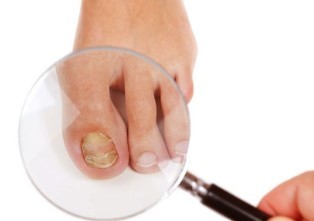
In connection with the above, the penetration of the parasite in the body of a healthy person does not in all cases, without exception, leads to the clinical symptoms of the disease or only very weakly expressed forms of pathology.
Because certain individual conditions, including a strong immune system protects, the person is outwardly healthy, will be the operator of the parasite, infecting other people.
How to recognize the disease
Because of the resemblance of the fungus damage to the mechanical symptoms of malformations and other diseases of the nail plate, which is based on clinical diagnosis is not just the external signs — what is nail fungus and more and supplementing their results of micro-studies.
For laboratory analysis are used pieces of plots to the affected nail, producing a scraping for fungus on the nails with special tools.
A special form of the parasite has revealed two nice research:
- culture by placing the biological sample of diseased tissue in a special nutrient medium;
- molecular-biological method or the so-called polymerase chain reaction (PCR).
More accurate DNA diagnosis is still not common.
The answer to the question: "how to identify nail fungus at home", experienced dermatologists will advise to consult a specialist to carry out a comprehensive and necessary cases, and differential diagnosis.
What is the danger of nail fungus
Uncomplicated nail fungus symptoms, although unpleasant, but the traditional fungal infections: stratification of the nail, pain, etc.
But in some cases, the fungus may be associated, for example, bacterial infection, or the disease may occur acutely, with the appearance of blisters, ulcers, weeping areas of adjacent soft tissue.
Sometimes, medical treatment, ongoing long-term outpatient (more than 16 weeks!), are ineffective, and the disease progresses.
How dangerous is nail fungus, long-term treatable? In the inflammatory process in the involved organs and systems, and then may need emergency hospitalization of the patient.
Methods for the treatment of fungal nails
The early stages of the disease, traditional medicine uses conservative methods, through the appointment of medical treatment.
Anti-fungal drug, which is designed to destroy fungus under the nail, contain substances that can inhibit the activity of its various cliches. To achieve effective treatment can be used in various pharmacological forms, sometimes complex to determine:
- pills — taken orally (through the gastrointestinal tract, usually in drinking water), given without the desired effect, topical medication;
- creams, pastes and gels for local, topical use, when the application of the drug directly to the affected part of the parasite body;
- aerosols;
- solution (resorcinol, boric acid, brilliant green, etc.) and suspension applications tool-soaked towels on the affected area, or use of the drug in the form of therapeutic baths.
Remedies are usually used twice a day until resolution of clinical manifestations. While this is a significant keratosis to facilitate the penetration of the dosage form into keratin formation, is carried out by its partial detachment. If the signs of nail fungus indicate in addition a secondary bacterial infection, patients recommended combination of antibiotics.
Important! If you resort to systemic Anti-fungal means, to monitor possible functional disorders of the necessarily produce the biochemical study of the liver (analysis of blood serum for the presence of bilirubin, in the presence of the enzyme, aspartate aminotransferase, gamma-glutamyl transferase, etc.
If the patient, the attending, for example nail fungus on his thumb, suddenly acute inflammation and/or severe itching, to resort to means:
- antihistaminicas (swelling and inflammation);
- desensitize (decrease sensitivity).
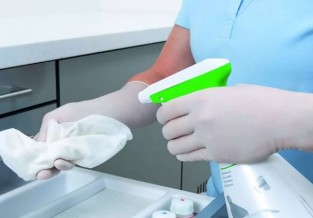
Treatment using pharmacological agents, as a rule, is, of course, and take a long period of time not less than three months!
This duration of treatment is due to the introduction of the pathogen into the structure of the nail, it takes time to update it, consistent with the gradually circumcision in the affected areas. If the disease is at a stage where medical treatment does not give positive results (total form) or the patient – the person of the old, to resort to radical methods, surgically remove the parasite is destroyed the nail.
Prevention
The best treatment is prevention, because prevention is much easier than the first settle the mushroom of the nail, and then get rid of it. Good ways to prevent infection should the strict observance of rules of personal hygiene, especially in public places, the imminent danger of possible contact with native speakers of mycosis, as well as prevention:
- primary, exceptional, abnormal dryness of the skin, abrasions, small wounds and sweat, and if their occurrence – prompt treatment, for example, aluminium hydrochloride 15% with ditilinom glycol 1% of excessive sweating of the feet;
- secondary disinfection special solutions for items in contact with the source of athlete's foot (shoes, towels, etc.).
Having the right information, what comes to nail fungus, it is realistic to protect themselves and their family from intrusion, and if the disease timely and appropriate treatment methods can accelerate the recovery.





























